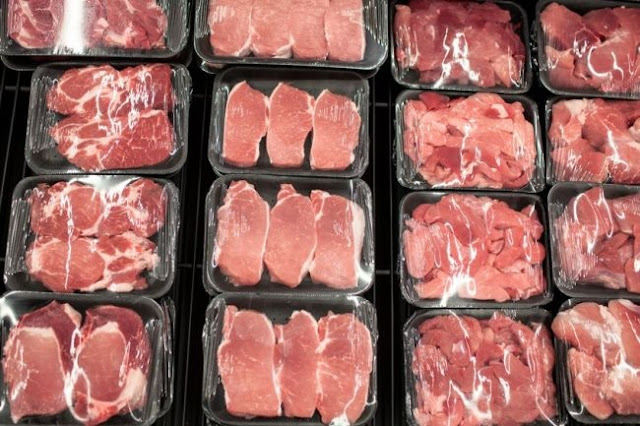99.8% of coffee scraps being discarded 're-discovered'
Used as fertilizer and interior material and 'transformation'
- 570,000 tons of discarded coffee grounds in the last five years-Only 0.2% of coffee beans are used to extract coffee.
-The main culprit behind the garbage chaos is the recycling boom without any stigma.
99.8% to 0.2%. It is not the ratio of the working class to the rich. Nor is it the probability of winning a company prize. The former is the amount used to extract coffee from coffee beans and then discarded, the latter being used purely for extracting coffee. Of coffee beans, 99.8 percent are released into garbage, with only 0.2 percent being used for coffee. Specifically, about 14 grams of coffee beans are needed to make a cup of Americano, but only 0.2 percent of coffee beans are used to extract coffee. The remaining 99.8% will be coffee grounds.

<Photo While coffee scraps have emerged as a serious environmental problem, with 130,000 tons generated last year, the Ministry of Environment revised the relevant enforcement rules in May, paving the way for the recycling of coffee scraps in earnest. It is expected that the recycling rate will increase with major coffee shops in the industry as it allows the collection, transportation, and recycling of coffee scraps that were classified as household waste. The picture shows the image of coffee scraps.
The size of the domestic coffee market surpassed 10 trillion won for the first time last year. In other words, the entire nation drank 26.5 billion cups of coffee a year. However, all the coffee scraps that occurred after the coffee was brewed were put in a standard plastic bag. This is because coffee scraps have been classified as general household waste. Last year alone, as much as 130,000 tons of coffee grounds were thrown away. Therefore, coffee waste has been stigmatized as the main culprit of environmental pollution.
Such coffee grounds have changed. It changed its name to 'green'. The word 'rediscovery of coffee scraps' is being said.
For now, the government took the lead. The Ministry of Environment revised the Enforcement Rules of the Waste Management Act in May to allow the collection, transportation, and recycling of coffee grounds that had been previously sold or incinerated. It has opened the way for the recycling of coffee waste, which had previously been thrown away as household waste, and encouraged the industry to make eco-friendly use of coffee scraps. As a result, the coffee industry is also moving to actively participate in the transformation of coffee grounds. In particular, coffee scraps are gaining new vitality as more and more major coffee shops are calling for higher recycling rates.
According to an industry on the 9th, the number of coffee grounds in Korea increased every year from 107,689 tons in 2014 to 124,134 tons in 2016 and 129,536 tons in 2017. This year (January-September) is 96,183 tons, with 570,000 tons of coffee grounds abandoned over the past five years.
The industry seems to agree with the direction of productively recycling coffee grounds. However, there are many places that hesitate due to the heavy burden of logistics, storage, and fertilizer costs for collecting huge amounts of coffee scraps.
"The cost of collecting and recycling all coffee scraps is more than eight times higher than the cost of disposal in the past," said a Starbucks official, who has been carrying out a pilot project with the Ministry of Environment and the Korea Federation for Resource Circulation since April 2016. "Even if the burden on companies increases, they continue to do so in terms of social contribution."
In fact, Starbucks' recycling rate of coffee grounds has increased every year, reaching 97 percent of the nation's store emissions this year. The amount is equivalent to 5,335 tons out of the total 5,500 tons. The recovered coffee grounds were reborn as eco-friendly compost and provided free of charge to local farms in Gyeonggi Province and other regions across the country. Starbucks' recycling rate of coffee grounds increased by more than 10 percentage points every year to 77 percent (3411 tons) in 2016 and 89 percent (4447 tons) in 2017.
Coffee scraps are also being transformed into interiors. Starbucks' Gwanghwamun Station branch, which opened in Jongno-gu, Seoul in 2015, introduced Starbucks' first coffee board, lighting gat, table and interior finishing materials made using coffee grounds. It was evaluated that it presented a new model for recycling coffee grounds.
Lotte GRS, which operates Angel-in-us Coffee, also provided 500 tons of fertilizer made using coffee scraps in 2016, and signed a win-win cooperation agreement with small and medium-sized companies in April last year to expand the market for Jeju farms. Angel-in-us Coffee currently provides 240 tons of fertilizer annually to Saetbyeol Citrus Farm in Seogwipo, Jeju Island.
An industry source said, "(Recycling coffee scraps) is more expensive, but I think we have to go," adding, "We are constantly thinking about ways to recycle them, and we are positively considering them positively."



Comments
Post a Comment